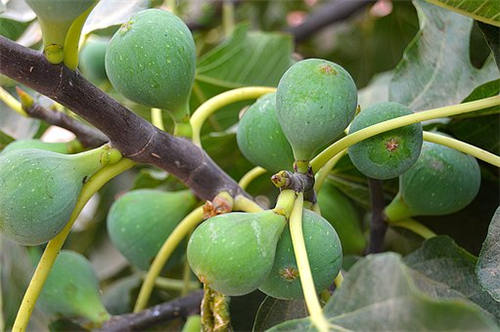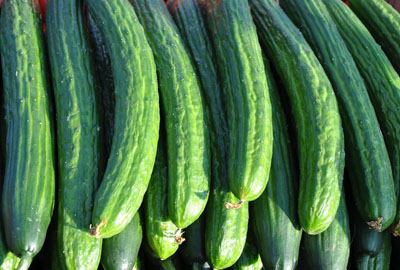When will black peanuts be planted? How do you plant it?
Black peanut, also known as selenium-rich black peanut, is a specialty of Hebei, rich in amino acids, calcium, iron, potassium and other trace elements, very popular, but because of its harsh growth conditions, so if you want to plant, you have to master the planting time. When will black peanuts be planted? How do you plant it?

To judge the sowing time of black peanut, the sowing time of black peanut is determined by the soil temperature of 10 cm. Generally, the soil temperature of 10 cm is stable through 12 ℃, and it is best to sow when the soil temperature of 10 cm is above 15 ℃.
The suitable sowing time in the spring and autumn double cropping peanut area in the south is from February to the middle of March, the suitable sowing time in the spring and summer peanut intercropping area in the Yangtze River basin is from March to late April, and the suitable sowing time in the black peanut area and peanut producing area in the north is from late April to early May. The temperature of peanut germination: the pearl bean type and multi-grain type can germinate above 12 ℃, while the common type and dragon type can germinate above 15 ℃, and the sowing time is a little later.
How do you plant it?
I. soil selection
The suitable sowing time of spring black peanut can improve the utilization rate of land and light energy, make the plant grow short and strong, dense internodes, many branches, good root growth, more dry matter accumulation, more flowering and fruiting, high full fruit rate, and easy to meet the requirements of high yield and high quality. Early sowing, due to low temperature, seeds can not germinate normally, slow emergence, increase the chance of soil diseases and pests, low emergence rate, poor seedling growth, and affect the differentiation and development of flower buds; but if sowing too late, the southern producing areas are in a high temperature and rainy environment. Peanuts are easy to grow and lodge and bear few pods. Peanuts in central and northern China, especially common peanuts, often encounter autumn drought and low temperature during podding and ripening, which affect pod development and nutrient accumulation, resulting in low satiety rate, kernel yield and oil content, resulting in lower yield and quality.
II. Variety selection
In the aspect of variety selection, excellent variety types and varieties should be selected reasonably according to market needs, cultivation methods, sowing date and other factors. In many areas, peanuts remain seeds year after year, and their habits are seriously degraded, so it is necessary to replace black peanut seeds properly. Seed selection should be in accordance with local conditions, mainly local varieties, cross-regional varieties can be appropriate trial, and then introduced.
Improved varieties are the internal cause of increasing yield, and the selection of improved varieties is the basis of increasing yield. When selecting seeds, you should choose large and full seeds as seeds. It is suitable to have strong resistance, suitable for close planting, high and stable yield.
3. Seed treatment
Full exposure of pods before sowing can break seed dormancy, improve physiological activities, increase water absorption capacity, enhance bud potential and improve germination rate.
Generally drying the fruit for 2 or 3 days before sowing, peeling off the shell after drying, and selecting seeds with large, full, uniform size and bright seed coat as seeds, not mixed sowing, so as not to form symbiosis of large and small seedlings, large seedlings bully small seedlings, resulting in reduced yield. According to the experiment, the yield of sowing primary kernels was more than 20% higher than that of sowing mixed kernels, and that of sowing secondary kernels was more than 10% higher than that of mixed kernels.
Do the germination test before sowing. Be sure to use seeds with strong germination potential and high germination rate to facilitate fast and neat emergence of seedlings.
Seed coating has become an important means to protect seeds all over the world. at present, after nearly a decade of promotion in peanut in China, it has become a mature technology. it has become the most labor-saving and simple way to control peanut underground pests and seedling diseases. Seed dressing per mu with Gaoqiao (60% imidacloprid seed coating agent) 30ml (2.5% imidacloprid) 25ml water 250ml or Gaoqiao (60% imidacloprid) 30ml Weifu (20% verapamil 20% thiram) 40ml water 250ml can effectively control soil-borne diseases (root rot, stem rot, etc.) and underground pests, and dry sowing.
Fourth, seed mixed with seed fertilizer
The latest technology of mixing seed fertilizer abroad is a magic weapon to increase the yield of peanuts, which can be mixed with regular seed dressing agents. various nutrient elements directly enter the seeds 30 minutes after seed dressing, eliminating the difference of seeds and having a very high performance-to-price ratio. the effects on peanuts are as follows:
Comprehensively replenish the phosphorus and other elements needed by peanut seeds. 30 minutes after seed dressing with BSN technology, nutrients enter into the seeds, eliminate seed differences, and make seedlings strong.
Adequate nutrition to improve the ability of seeds to resist low temperature, high humidity and other bad weather
Balanced nutrition, eliminate yellowing symptoms such as element deficiency, regulate seedling growth, seedling growth is not prosperous, but the root system is very developed, laying the foundation for the middle and later stage.
The seedling is strong, the main root is deeply rooted, the fibrous root is well developed, the disease resistance is enhanced, and the ability to absorb water and fertilizer is strong.
The first pair and the second pair of lateral branches of peanut develop healthily, stimulate flower bud differentiation and blossom for a long time.
The plant is not strong and long, the fruit branches and needles are increased, the leaves are not fallen, and the fruit is too big to be full.
5. Sowing depth and density
When sowing, we should pay attention to reasonable close planting, about 8000-10000 holes / mu for large peanuts and 10000-12000 holes / mu for small peanuts, and it is appropriate to sow two seeds per hole. Hole-digging and on-demand sowing, ditching hole sowing or mechanical sowing can be used.
Sowing depth, sowing depth and timely soil mulching is one of the key measures for peanut seedlings. The sowing depth should be 5 cm (refers to the depth of trenching, not the depth of soil cover). The specific situation should also be flexible according to soil quality, soil moisture, that is, soil sticky, good soil moisture, can be appropriately shallow, but not less than 3 cm; sandy soil, soil moisture is poor, appropriate deeper.
Suppression after sowing, after sowing, we should also pay attention to the same depth of covering soil, and carry out timely suppression, especially in dry and windy places, so as to prevent the sowing layer from running away from moisture, causing the seeds to dry and lack seedlings. The time of suppression depends on the soil moisture, the difference in soil moisture should be suppressed immediately, the soil moisture is good, the soil moisture is much, and there should be a layer of dry soil after the loss of soil surface water.
Time: 2019-04-10 Click:
- Prev

When will the figs be cut? How to cuttage? How long can it take root after cutting?
Fig, also known as natural son, is a kind of health-preserving fruit for both fruit and medicine, which generally matures in autumn and winter, and the market price is about 20 yuan per jin, so it is a little expensive, so many people use cutting to plant figs to increase yield.
- Next

Which cucumbers are suitable for planting in summer and autumn? (with planting technology)
Cucumber is one of the most common vegetables in China, with various varieties and simple planting techniques, so many people plant it, but due to regional and climatic problems, it is not possible to grow cucumbers in all seasons. What are the suitable cucumbers for summer and autumn? Lu cucumber No. 2, bred by vegetable Research Institute of Shandong Academy of Agricultural Sciences
Related
- Fuxing push coffee new agricultural production and marketing class: lack of small-scale processing plants
- Jujube rice field leisure farm deep ploughing Yilan for five years to create a space for organic food and play
- Nongyu Farm-A trial of organic papaya for brave women with advanced technology
- Four points for attention in the prevention and control of diseases and insect pests of edible fungi
- How to add nutrient solution to Edible Fungi
- Is there any good way to control edible fungus mites?
- Open Inoculation Technology of Edible Fungi
- Is there any clever way to use fertilizer for edible fungus in winter?
- What agents are used to kill the pathogens of edible fungi in the mushroom shed?
- Rapid drying of Edible Fungi

